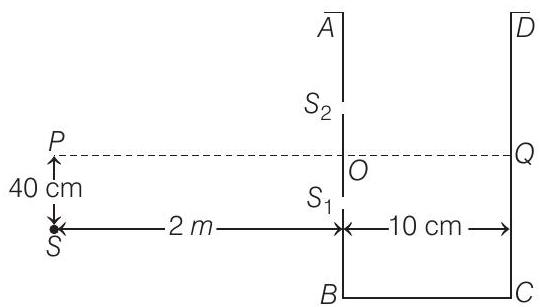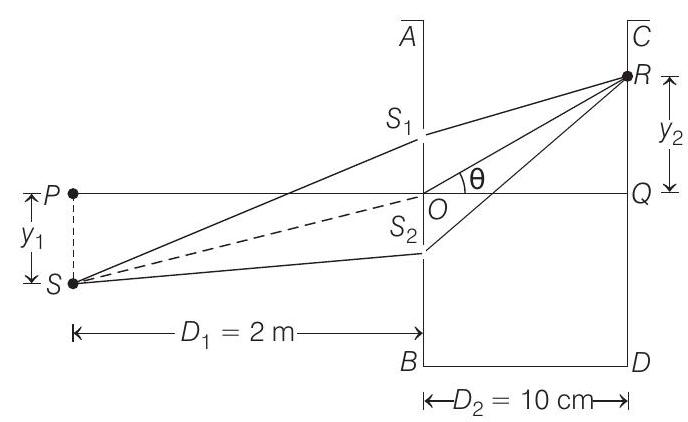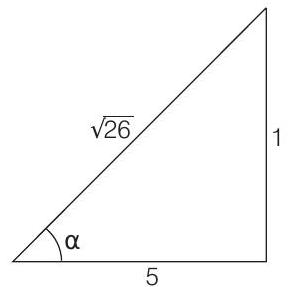Optics 6 Question 47
49. A vessel

Show Answer
Answer:
Correct Answer: 49.
Solution:
- Given

Path difference between

Now, let at point
Path difference between
Central bright fringe will be observed when net path difference is zero.
Therefore, central bright fringe is observed at
Alternate solution
or
or
or
or
or
(b) The central bright fringe will be observed at point






